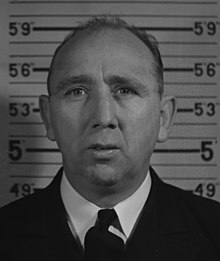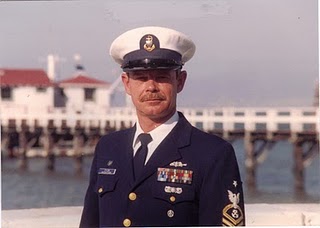
Richard Dixon was the coxswain of a 44-foot Motor Lifeboat, on the July 4th weekend of 1980, when his skill and daring enabled him to rescue stricken pleasure boat crew off Tillamook Bay, Oregon. During the first incident a 58-foot yacht was in distress in the aftermath of hurricane Celia, and needed to seek sheltered waters, but wave conditions seemed likely to batter it apart if it tried to use the narrow entrance between two stone jetties to enter Tillamook Bay's harbor. Dixon and the coxswain of another motor lifeboat maneuvered beside the yacht, to absorb some of the wave energy as it entered harbor.

Winslow W. Griesser (1856–1931) was a station keeper in the United States Life-Saving Service, one of the agencies that were merged to form the United States Coast Guard. In 2016 the Coast Guard honored him by naming one of its new Sentinel-class cutters after him.
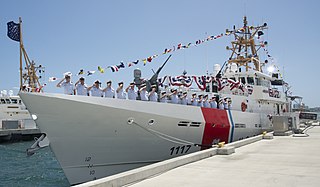
USCGC Donald Horsley (WPC-1117) is the United States Coast Guard's 17th Sentinel-class cutter. She was commissioned on May 20, 2016. She was the fifth of a cohort of six FRCs home-ported in San Juan, Puerto Rico.

Maurice David Jester was a member of the United States Coast Guard. Jester enlisted in the Coast Guard as a surfman in 1917. By 1936, he had risen to the rank of chief boatswain. In December 1941, after the United States entered World War II, Jester was given a lieutenant's commission, and he was given command of the USCGC Icarus (WPC-110).

Rollin Arnold Fritch was a United States Coast Guard seaman who died at his weapons station while shooting at a Japanese kamikaze, during World War II.

USCGC Bailey Barco (WPC-1122) is the United States Coast Guard's 22nd Sentinel-class cutter, and the second to be stationed in Alaska, where she was homeported at Coast Guard Base Ketchikan.

USCGC Benjamin Dailey (WPC-1123) is the United States Coast Guard's 23rd Sentinel-class cutter. She is the first cutter of her class stationed in the Coast Guard's Eight District, with a homeport in Pascagoula, MS.

Richard H. Patterson was a chief petty officer in the United States Coast Guard, recognized for saving the crew of his vessel, Point Welcome, after the skipper and executive officer were taken out of action during an aerial attack, in Vietnam, in 1966.

USCGC Richard Snyder (WPC-1127) is the 27th Sentinel-class cutter built for the United States Coast Guard. She is the first of her class to be home-ported in Atlantic Beach, North Carolina.

USCGC Forrest Rednour (WPC-1129) is the 29th Sentinel-class cutter built for the United States Coast Guard. She is the first of the four vessels of her class to be home-ported in San Pedro, California. Other sister ships have been based in Florida, Mississippi, Puerto Rico, New Jersey, North Carolina, Hawaii and Alaska. But Forrest Rednour is the first to be homeported on the west coast of the lower 48 states. The vessel will be homeported at a base near Los Angeles' Terminal Island. Three sister ships will join her, at this base.

USCGC Oliver Berry (WPC-1124) is the United States Coast Guard's 24th Sentinel-class cutter. She was the first member of the three members of her class to be homeported in Honolulu, Hawaii.

Benjamin Bottoms was a United States Coast Guard radioman who died while attempting to rescue the crew of a USAAF bomber that had crashed-landed in Greenland in November 1942. Bottoms was the radioman of the USCGC Northland's Grumman J2F-4 Duck floatplane. When a B-17 bomber crash landed near Northland his aircraft was assigned to search for it. Bottoms's pilot Lieutenant John A. Pritchard sighted the bomber, and landed as close to the wreck as possible—four miles away. Pritchard and Bottoms were able to assist two of the injured bomber crew to their plane, and take them back to Northland. However, on their second rescue visit they encountered bad weather, and crashed. It took seventy-five years to locate their bodies.

Angela McShan was a highly regarded Coast Guardsman in the United States Coast Guard. In 1999 McShan was the first African-American to be appointed an instructor at the Chief Petty Officers' Academy. In 2000 McShan was the Coast Guard's first African-American woman to be promoted to Master Chief Petty Officer. McShan enlisted in the Coast Guard in July 1979. For her first fourteen years in the Coast Guard she served as a storekeeper. In her final six years McShan served as a yeoman, a civil rights counselor, and finally, an instructor.

John F. McCormick was a sailor in the United States Coast Guard who was recognized for his courage. McCormick was born in Portland, Oregon, and served much of his 26 year Coast Guard career in Oregon. After his 1947 retirement, he made his home in Garibaldi, Oregon; he lived there for another 39 years.
John Witherspoon was a distinguished sailor in the United States Coast Guard. Witherspoon started his military career in the United States Army, enlisted in the Coast Guard in 1963, where, after promotion to Quartermaster First Class, he was invited to attended Officer training school, and was commissioned an ensign, in 1971. Witherspoon would eventually command three Coast Guard cutters, MallowValiant and Dependable, and rise to the rank of captain. He was only the second individual of African-American descent to command a cutter, and was the first individual of African-American descent to command a Coast Guard base.
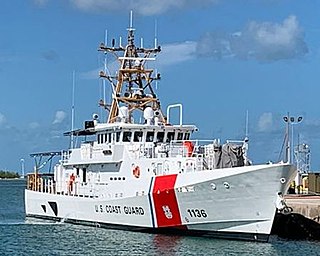
USCGC Daniel Tarr (WPC-1136) is the United States Coast Guard's 36th Sentinel-class cutter, and the first of three to be homeported in Galveston, Texas.
USCGC William Sparling (WPC-1154) will be the United States Coast Guard's 54th Sentinel-class cutter.
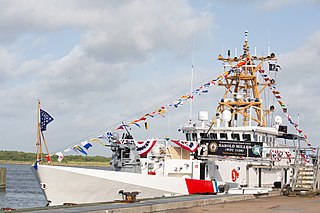
USCGC Harold Miller (WPC-1138) is the United States Coast Guard's 38th Sentinel-class cutter.

USCGC Glen Harris (WPC-1144) will be the United States Coast Guard's 44th Sentinel-class cutter.

USCGC Edgar Culbertson (WPC-1137) is the United States Coast Guard's 37th Sentinel-class cutter, and the second of three to be homeported in Galveston, Texas.
